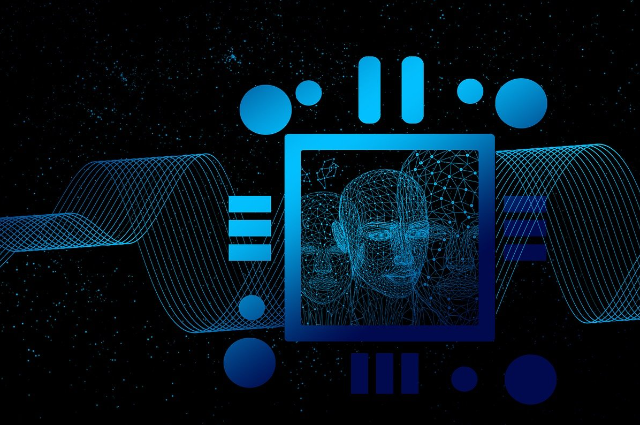
Image by Gerd Altmann from Pixabay
A recent study has highlighted a connection between quantum theory and information theory, though its practical applications remain unclear for now. According to Guilherme B. Xavier, a quantum communication researcher at Linköping University, Sweden, this research is fundamental. It could pave the way for significant advancements in quantum computing and information technology. While the findings may seem abstract today, they could unlock groundbreaking technologies across multiple scientific disciplines in the future.
Understanding Wave-Particle Duality
To grasp the study’s implications, it’s crucial to revisit one of quantum mechanics’ most puzzling concepts: wave-particle duality. This principle states that light can behave both as particles and as waves, a characteristic central to quantum physics.
The concept dates back to the 17th century when scientist Isaac Newton proposed that light consists of particles. At the same time, other scholars believed light was made of waves. While Newton speculated that light might be both, he lacked the tools to prove it.
Scientific Evidence Emerges
Fast forward to the 19th century, experimental evidence from several physicists demonstrated that light behaves like waves. However, in the early 20th century, Max Planck and Albert Einstein challenged this notion by suggesting that light might also exhibit particle-like behaviour.
The breakthrough came in the 1920s when physicist Arthur Compton conducted experiments showing that light has kinetic energy—a defining trait of particles. He named these light particles “photons,” confirming that light possesses both wave and particle characteristics, just as Newton had theorized centuries earlier.
Expanding the Concept
Remarkably, wave-particle duality isn’t limited to light alone. Electrons and other elementary particles also demonstrate this dual behaviour. Understanding this phenomenon remains a cornerstone of quantum mechanics and is critical for advances in technologies like quantum computing, where particles can exist in multiple states simultaneously.
Looking Ahead
While the current research linking quantum theory and information theory may seem abstract, history shows that foundational discoveries often precede revolutionary technologies. As scientists continue to explore quantum mechanics' mysteries, the potential for transformative applications grows ever closer.
The measurement of a photon reveals its dual nature as both a wave and a particle, but it is impossible to observe these characteristics simultaneously. This phenomenon is described by the complementarity principle, introduced by Niels Bohr in the 1920s. According to this principle, depending on the measurement method used either the wave-like or particle-like behaviour of light will be evident, but not both at once.
Connection to Quantum Information
In 2014, researchers from Singapore established a mathematical link between this principle and the concept of entropic uncertainty which quantifies the amount of unknown information in a quantum system. Their findings suggest that regardless of whether one measures wave or particle characteristics, there will always be at least one moment of unmeasurable information.
Recent Validation
Recently, scientists from Linkoping University in collaboration with teams from Poland and Chile confirmed that the Singapore team's theoretical findings through experimental methods. This advancement reinforces our understanding of quantum mechanics and highlights the complicated nature of measuring phenomena at the quantum level.
The study of quantum mechanics offers a direct glimpse into the fundamental behaviours of particles, as highlighted by Guilherme B Xavier. He notes that while we can observe the outcomes of experiments, the internal processes often remain invisible. This intriguing aspect of quantum physics not only benefits scientists but also raises philosophical questions about the nature of reality.
Innovative Experimental Setup
In their latest experiment, researchers from Linkoping University explored a unique approach by utilizing photons that move in a circular pattern known as orbital angular momentum. This contrasts with the more traditional up-and-down fluctuation of light. The choice to employ orbital angular momentum is significant, as it has the potential to carry more information that will pave the way for practical applications in technology and communication.
Measurement Techniques
The experiments were conducted using an interferometer, a common research instrument. In this setup, photons are directed at a crystal beam splitter which divides their paths into two distinct routes. These paths then intersect at another beam splitter, where the photons are measured. Depending on the configuration of this second device, the photons can be detected either as waves or particles. This measurement flexibility emphasizes the complex nature of quantum systems and their behaviour under different observational conditions. Through these innovative methods, researchers continue to deepen our understanding of quantum phenomena and explore their implications for future technologies.
Unique Quantum Experiment Setup Enables Light Measurement as Waves and Particles
A groundbreaking experiment involving a second beam splitter that can be partially inserted into the path of light has allowed researchers to measure light as waves, particles, or a combination of both within the same experimental setup. This flexible configuration opens up new possibilities in understanding light's dual nature and has potential real-world applications.
Future Applications in Quantum Technology
The researchers believe their findings could significantly impact fields such as quantum communication, metrology, and cryptography. Quantum communication could benefit from more secure data transmission methods, while metrology might achieve higher precision measurements. Cryptography could see advancements in encryption techniques due to the experiment's implications.
Next Steps in the Experiment
Looking ahead, the research team plans to explore the behaviour of photons when the setting of the second crystal is altered just before the photons reach it. This dynamic adjustment could demonstrate a novel way of strongly distributing encryption keys in communication systems.
Daniel Spegel-Lexne, a PhD student from the Department of Electrical Engineering had expressed excitement about the possibilities:
"It would show that we can use this experimental set-up in communication to securely distribute encryption keys, which is very exciting."
These ongoing experiments continue to push the boundaries of quantum mechanics, promising innovative applications while deepening our understanding of light’s complex behaviour.
. . .
References:
